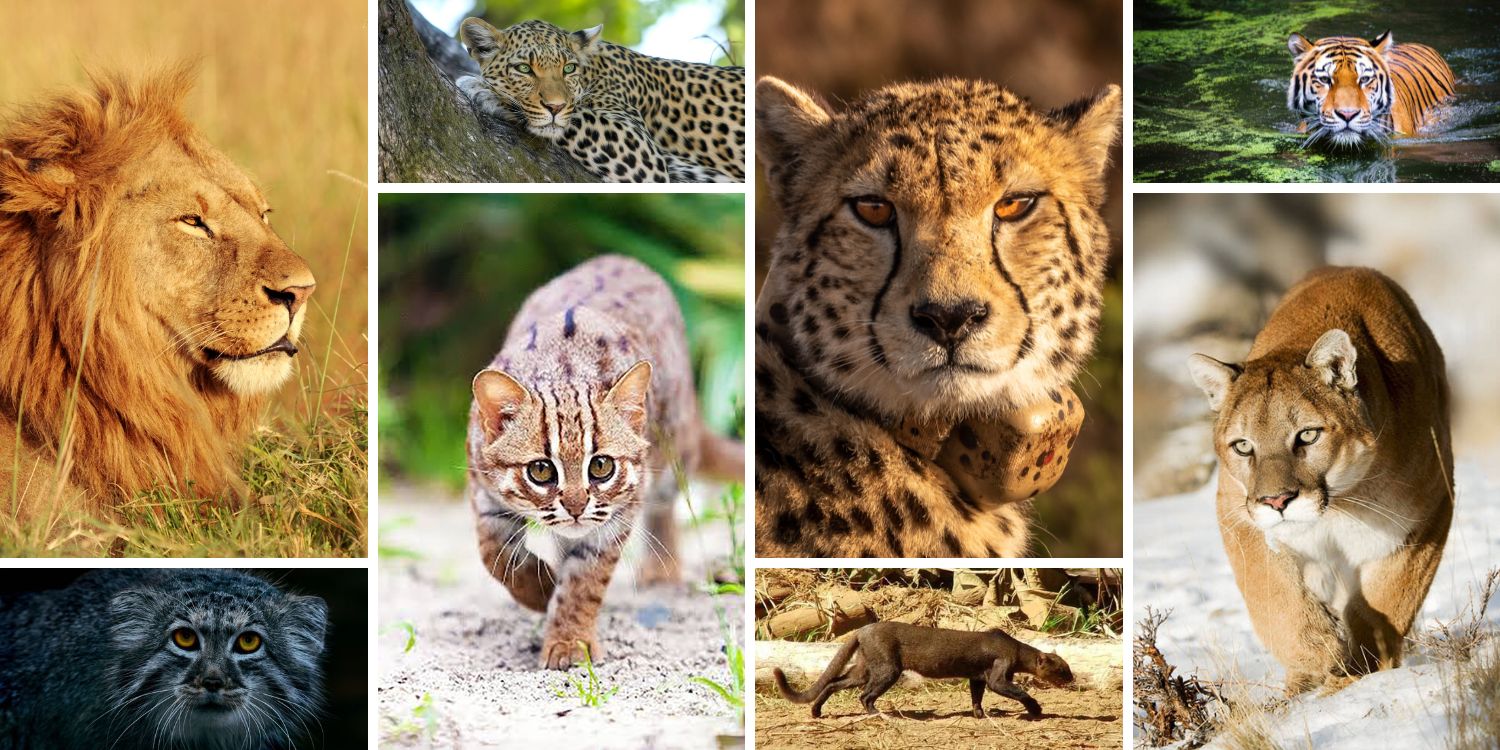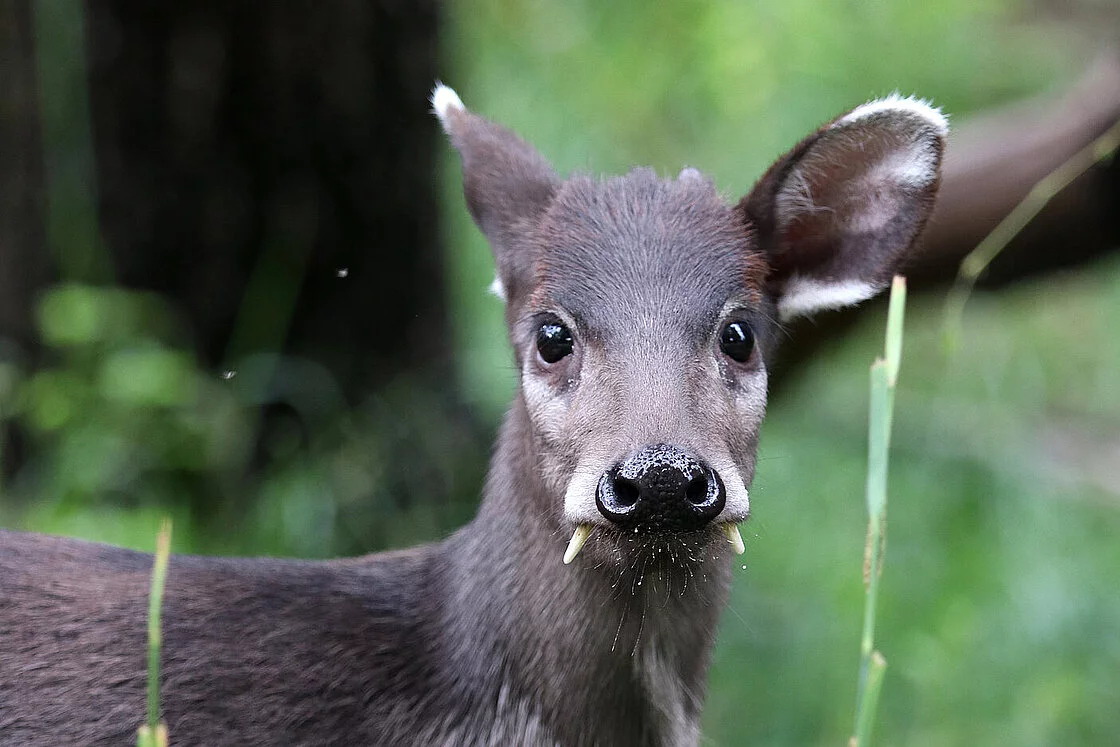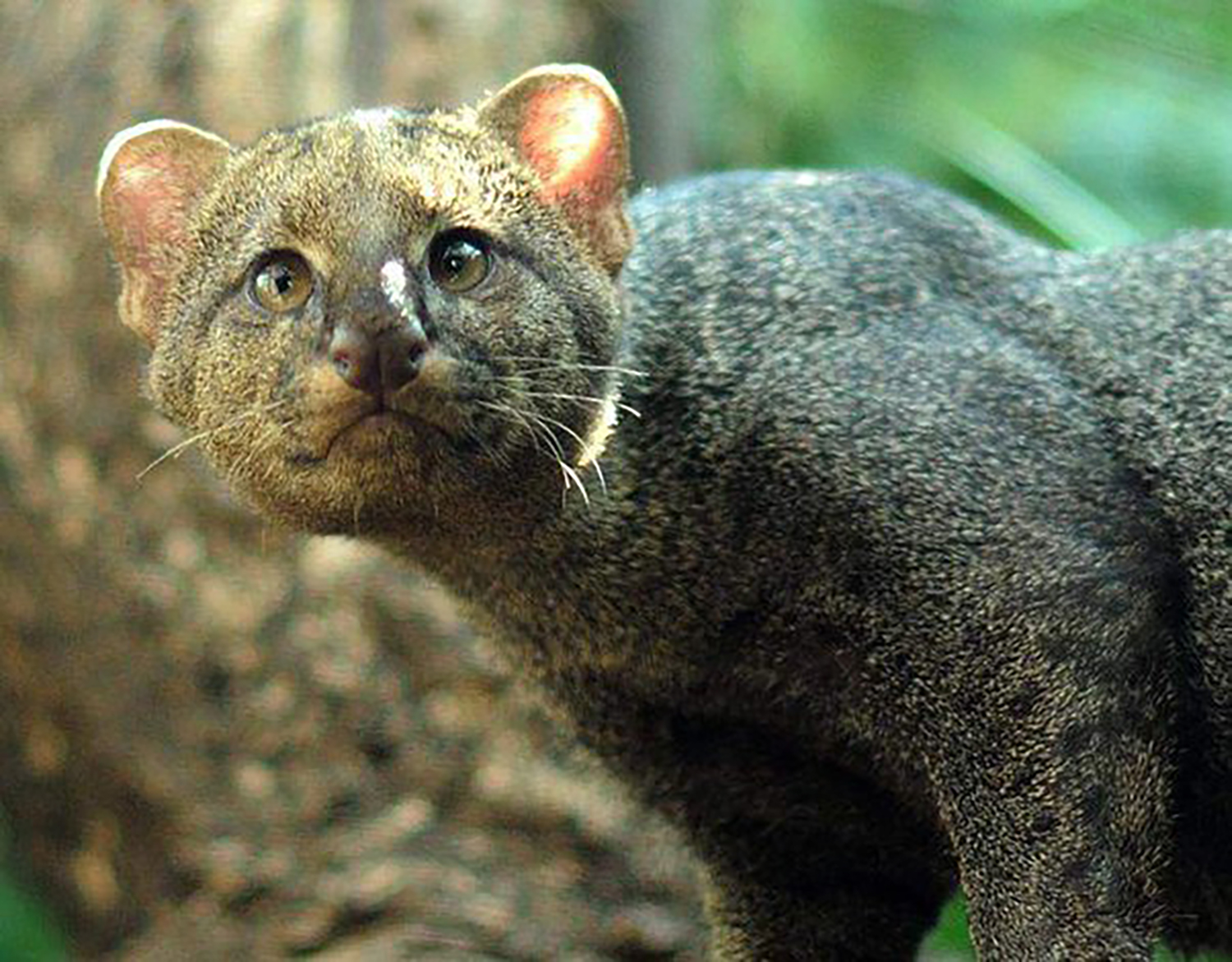
Cats. Big ones, small ones, fluffy ones, sleek ones – our fascination with these captivating creatures knows no bounds. But the term “cat” encompasses a wider range than just our domesticated companions. Enter the Felidae family, a group of mammals that includes everything from the majestic lion to the elusive sand cat.
This post is your purrfect guide to the Felidae family, taking you on a global adventure to discover the diverse and fascinating felines that prowl our planet. We hope you will continue to explore and learn – and we will continue to build out profiles on each cat species to help in your journey of discovery.
Built to Hunt
Felids are all obligate carnivores, meaning their entire diet consists of meat. This translates into a physical design optimized for hunting. Their slender, muscular bodies allow for stealthy stalking and powerful bursts of speed. Retractable claws act like built-in daggers (one species can not retract its claws: do you know which one?), while sharp teeth and powerful jaws deliver a finishing blow. Keen eyesight and a heightened sense of smell make them masters at tracking prey.
A Global Family
The Felidae family boasts 41 recognized species belonging to 14 genera – grouped into eight lineages – and divided into 92 subspecies. Here’s a glimpse into the fascinating felids you might encounter:
Subfamily Pantherinae:
These apex predators reign supreme in their ecosystems.
Panthera lineage: Genus Panthera
These are the true big cats. (See: Roaring vs Purring… Or, What Is a Big Cat?)
- Jaguar (Panthera onca): Powerful cat of the Americas, with a love for water.
- Leopard (Panthera pardus): Spotted wonder, perfectly adapted for various habitats.
- Lion (Panthera leo): King of the jungle, with social prides and a thunderous roar.
- Snow leopard (Panthera uncia): Ghost of the mountains, perfectly camouflaged for the Himalayas.
- Tiger (Panthera tigris): Majestic hunter with powerful stripes, at home in Asia.
Panthera lineage: Genus Neofelis
- Clouded leopard (Neofelis nebulosa): Stunning coat with cloud-like markings, a master climber of Southeast Asian rainforests.
- Sunda clouded leopard (Neofelis diardi): Marked much like its cousin, this medium-sized wild cat native to Borneo and Sumatra is also known as the Sundaland clouded leopard, Enkuli clouded leopard, Diard’s clouded leopard, and Diard’s cat.
Subfamily Felinae:
Don’t let their size (or the common term “small cat”) fool you! These felids are just as skilled hunters as their larger cousins and some “small cats” are quite large.
Bay cat lineage: Genus Catopuma
- Asian golden cat (Catopuma temminckii): A medium-sized wild cat native to the northeastern Indian subcontinent, Southeast Asia, and China – that comes in more colors than its name implies.
- Bay cat (Catopuma badia): Also known as the Bornean bay cat, this is a bright chestnut colored small wild cat endemic to the island of Borneo.
Bay cat lineage: Genus Pardofelis
- Marbled cat (Pardofelis marmorata): This small wild cat native from the eastern Himalayas to Southeast Asia is patterned in stripes and spots.
Caracal lineage: Genus Caracal
- African golden cat (Caracal aurata): This small wild cat that can be solid colored or spotted lives in the rainforests of West and Central Africa.
- Caracal (Caracal caracal): This medium-built African wild cat is uniformly reddish tan or sandy in color with long legs, a short face, distinctive ear tufts, and a powerful bite.
Caracal lineage: Genus Leptailurus
- Serval (Leptailurus serval): This African wild cat is a slender, medium-sized cat characterized by a small head, large ears, a golden-yellow to buff coat spotted and striped with black, and a short, black-tipped tail.
Ocelot lineage: Genus Leopardus
- Andean mountain cat (Leopardus jacobita): Native to the high Andes, fewer than 1,500 individuals are thought to exist in the wild.
- Geoffroy’s cat (Leopardus geoffroyi): Native to the southern and central regions of South America, this wild cat about the size of a domestic cat.
- Kodkod (Leopardus guigna): Also called güiña, this is the smallest felid species native to the Americas.
- Margay (Leopardus wiedii): Native to Central and South America, this wild cat is is very similar to the larger ocelot.
- Ocelot (Leopardus pardalis): Rainforest hunter with a spotted coat and a taste for snakes.
- Oncilla (Leopardus tigrinus): Also known as the northern tiger cat, little spotted cat, and tigrillo, this is a small spotted cat ranging from Central America to central Brazil.
- Pampas cat (Leopardus colocola): There is debate on how many subspecies exist of this mini mountain lion lookalike that prowls the grasslands of South America.
- Southern tigrina (Leopardus guttulus): Also called the southern tiger cat, this small wild cat species native to Brazil, Argentina, and Paraguay has a yellowish-ochre coat patterned with open black rosettes.
Lynx lineage: Genus Lynx
- Bobcat (Lynx rufus): Sometimes also called the red lynx, this North American lynx has distinctive black bars on its forelegs and a black-tipped, stubby (or “bobbed”) tail, from which it derives its name.
- Canada lynx (Lynx canadensis): Adapted for snowy regions with big paws and tufted ears, this lynx species roams Canada, Alaska, and the northernmost continental United States.
- Eurasian lynx (Lynx lynx): The largest of the four lynx species is further divided by multiple subspecies that are widely distributed across Europe to Central Asia and Siberia, the Tibetan Plateau, and the Himalayas.
- Iberian lynx (Lynx pardinus): This endangered lynx is endemic to the Iberian Peninsula in southwestern Europe.
Puma lineage: Genus Acinonyx
- Cheetah (Acinonyx jubatus): The fastest land animal, built for sprinting down prey.
Puma lineage: Genus Herpailurus
- Jaguarundi (Herpailurus yagouaroundi): A sleek, long-bodied cat that fills the niche between jaguar and otter in Central and South America.
Puma lineage: Genus Puma
- Cougar (Puma concolor): This elusive American cat holds the Guinness World Record for the mammal with the most names.
Leopard cat lineage: Genus Otocolobus
- Pallas’s cat (Otocolobus pallipes): Flat-faced feline with thick fur, thriving in the cold steppes of Central Asia.
Leopard cat lineage: Genus Prionailurus
- Fishing cat (Prionailurus viverrinus): Loves to fish, with partially webbed paws and a distinctive head shape.
- Flat-headed cat (Prionailurus planiceps): A small wild cat with short reddish-brown fur native to wetlands in Sumatra, the Thai-Malay Peninsula, and Borneo, that preys foremost on fish, frogs, and crustaceans.
- Leopard cat (Prionailurus bengalensis): This small spotted wild cat native to mainland South, Southeast, and East Asia can successfully cross with domestic cats, creating the hybrid pet known as a Bengal cat.
- Rusty-spotted cat (Prionailurus rubiginosus): One of the cat family’s smallest members.
- Sunda leopard cat (Prionailurus javanensis): Native to the Sundaland islands of Java, Bali, Borneo, Sumatra, and the Philippines, this wild cat is considered distinct from the leopard cat occurring in mainland South and Southeast Asia.
Domestic cat lineage: Genus Felis
- African wildcat (Felis lybica): These sandy grey striped wild cats were tamed in the Fertile Crescent and ancient Egypt.
- Black-footed cat (Felis nigripes): Also called the small-spotted cat, this is the smallest wild cat in Africa.
- Chinese mountain cat (Felis bieti): Also known as the Chinese desert cat and Chinese steppe cat, this small wild Felis species has sand-colored fur, faint dark stripes on the face and legs, and black tipped ears.
- Domestic cat (Felis catus): The beloved pets we share our lives and homes with.
- European wildcat (Felis silvestris): A small wildcat species native to continental Europe, Scotland, Turkey, and the Caucasus that easily interbreeds with domestic cats.
- Jungle cat (Felis chaus): Also called reed cat, swamp cat, and jungle lynx, this long-legged cat is the largest of the Felis species, and it is native to the Middle East, the Caucasus, South and Southeast Asia, and southern China.
- Sand cat (Felis margarita): Adorable desert dweller with thick fur for harsh environments.
A Delicate Balance
Despite their impressive hunting prowess, many felid species face threats. Habitat loss due to human encroachment disrupts their territories and hunting grounds. Additionally, conflicts with humans and the illegal wildlife trade pose significant dangers.
Protecting Our Feline Friends
Conservation efforts are crucial for ensuring the survival of these magnificent creatures. Creating protected areas, promoting awareness, and combating illegal wildlife trade are all essential steps.
By appreciating the diversity and importance of the Felidae family, we can help ensure that these cats continue to grace our world with their beauty and wild spirit for generations to come. So, the next time you encounter a picture of a majestic lion or hear a story about a playful house cat, remember – they’re all part of the incredible Felidae family, a testament to the remarkable diversity of life on Earth.





